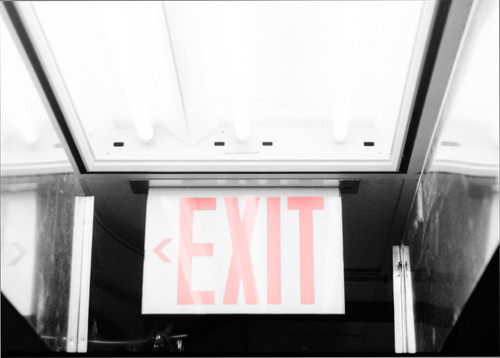Stand (or, in this case, semi-stand) development uses a very dilute developing solution, and very little agitation. It's used as a compensating development method to bring out shadow detail and increase apparent dynamic range. By letting the film sit undisturbed, the highlight areas develop quickly, but exhaust the developer touching them just as quickly. The shadow areas develop much more slowly, and can sit undisturbed for long periods of time without depleting the active developer. In this way, your highlights don't blow out, but you can still see details in the shadows. It's one part exposure, by exposing correctly for the shadows, one part developing, and three parts patience. Letting a roll of film sit in the tank for forty minutes, only agitating once at the beginning and once halfway through was a new one for me.
I will point out that I don't think I was completely successful - the highlight areas in image below are, obviously, not blown out, as there's quite a bit of detail in the light fixture. The shadowed areas, frankly, could be a bit darker. I did 'shop some color back into the image. It needed something, and the clearest picture I had in my head of this composition was the red "< EXIT" on the sign.

So, no setup here, film and all, but, this is my "recipe" if you will:
Exposed to put the shadows in Zone III (I metered on the ducts, to the bottom-left of the sign)
Developed in 600ml 68-degree water plus 6ml of HC-110.
One minute agitation, sit for 20 minutes, 15 seconds of agitation, sit for another 20 minutes.
2 minutes in the stop, constant agitation.
5 minutes in Kodak fixer, agitate for first 90 seconds, then 5 inversions every minute thereafter.
5 minutes in Hypo.
5 minute rinse, Photo-flo, 5 more minutes of rinsing
I wish I would have had my 60D with me, to get a comparison shot on digital. I'm fairly confident saying that if I had made the same shot, at the same settings, you would have seen the shadows, but the light fixture and surrounding ductwork would have been clipped.


